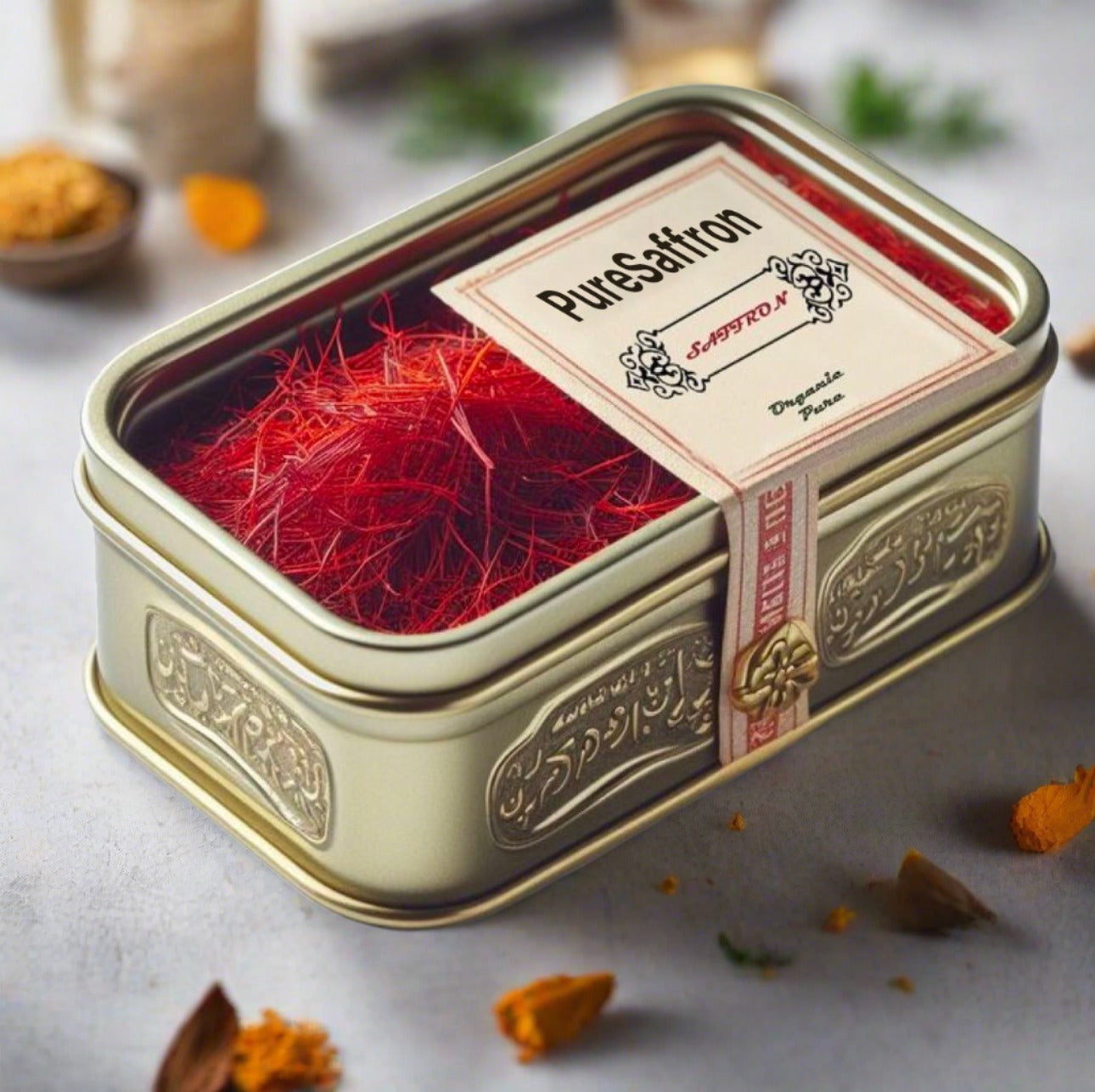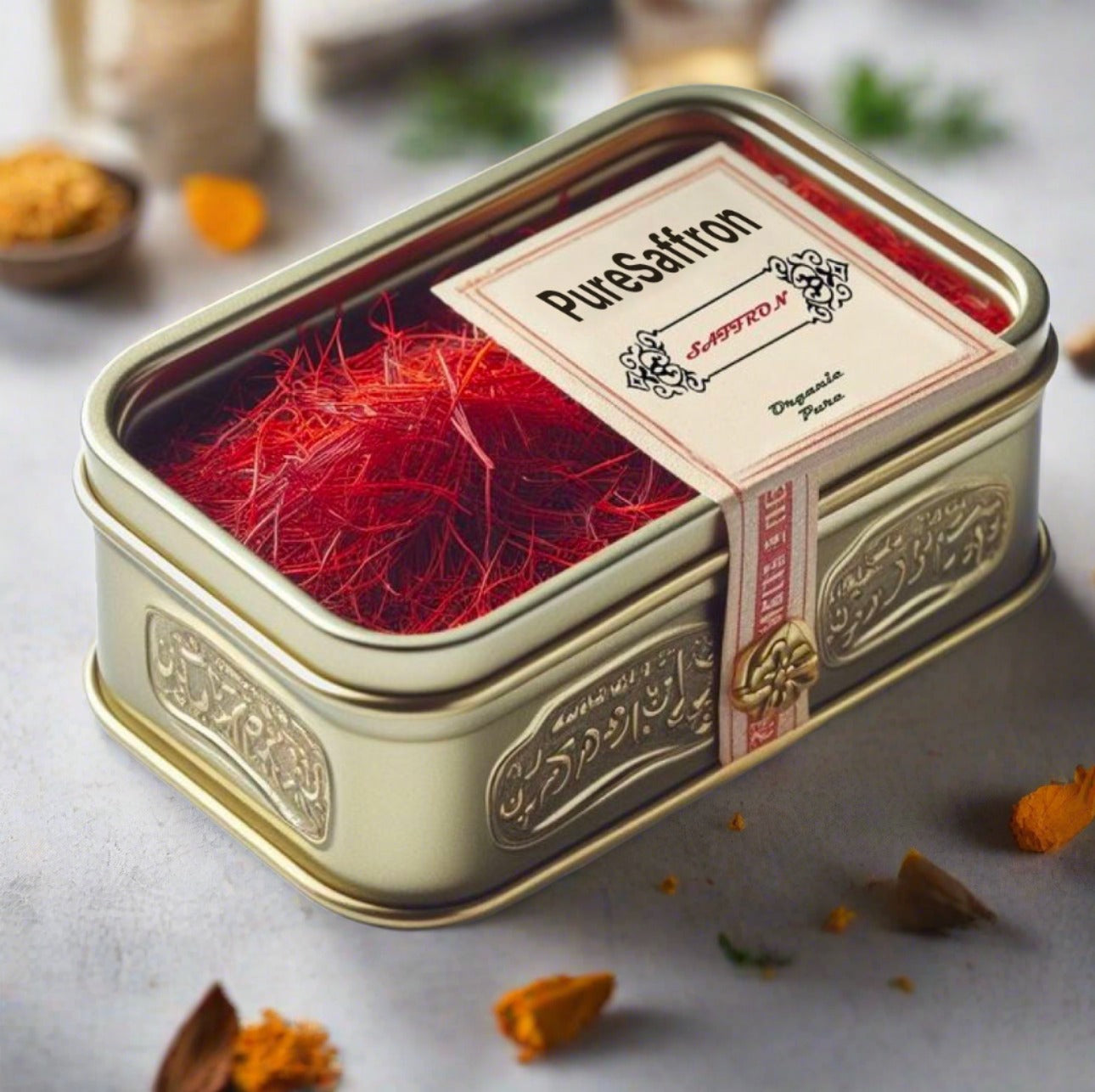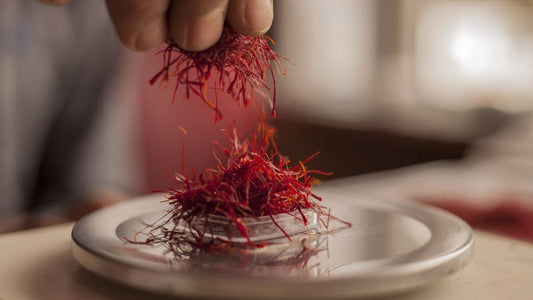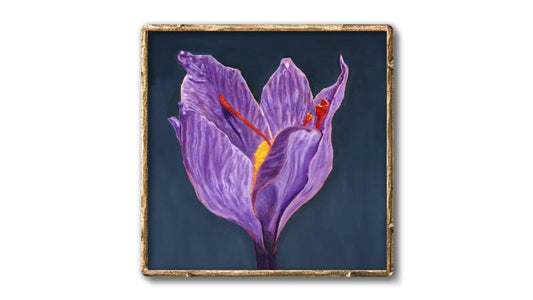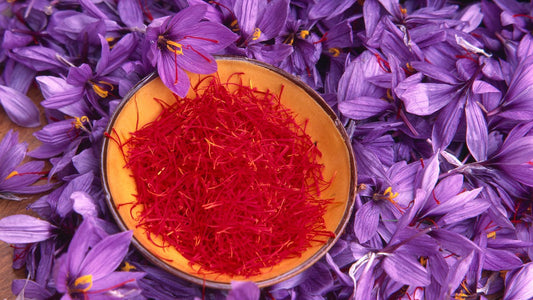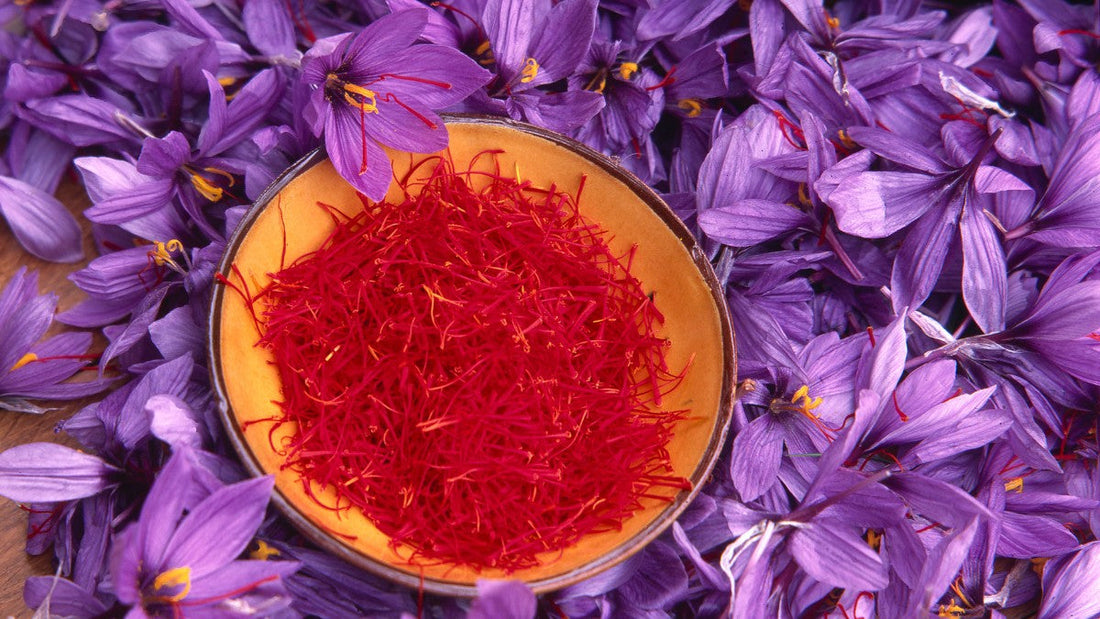
Saffron in Literature: Symbolism, History, and Influence
Ara OhanianShare
Throughout history, saffron has been more than just a luxurious spice—it has served as a vivid symbol, a marker of opulence, and a source of inspiration for poets and authors. Its golden hue, intoxicating aroma, and rich cultural associations have made it a recurring motif in literature across cultures and time periods.
From the verses of ancient poets to the pages of modern novels, saffron has captured the imagination of writers, offering layers of meaning and depth to their works. In this blog, we’ll explore the fascinating role of saffron in literature, tracing its symbolic significance, its appearances in famous works, and its enduring influence in the world of storytelling.
The Symbolism of Saffron in Literature
Saffron is not just a spice; it is a symbol laden with meanings. Over centuries, it has been associated with:
- Wealth and Luxury: Due to its rarity and high cost, saffron often symbolizes affluence and exclusivity in literary works.
- Purity and Spirituality: The golden hue of saffron is frequently linked to divinity, enlightenment, and purity in ancient texts.
- Passion and Love: Its vibrant color and sensuous aroma make saffron a symbol of romance and desire in poetry and prose.
- Healing and Renewal: Revered for its medicinal properties, saffron often represents rejuvenation and well-being.
These symbolic meanings allow writers to use saffron as a literary device, weaving its essence into their narratives to evoke specific emotions or themes.
Saffron in Ancient Texts and Poetry
The earliest mentions of saffron in literature date back to ancient civilizations. In works such as the Rigveda and Homer’s Iliad, saffron appears as a sacred and luxurious substance. For example:
- In the Rigveda, one of the oldest Hindu scriptures, saffron is described as a divine herb with purifying qualities.
- In Homer’s Iliad, saffron is referenced in the description of dawn as “saffron-robed,” emphasizing its golden and radiant qualities.
Similarly, ancient Persian poetry often celebrated saffron as a symbol of beauty and abundance. The Persian poet Ferdowsi, in his epic Shahnameh, extols the golden fields of saffron as a mark of prosperity and divine favor.
Saffron in Western Literature
As saffron spread across Europe during the Middle Ages, it began to feature prominently in Western literature. Authors and poets used saffron to evoke sensory richness, luxury, and spirituality. For instance:
- In Geoffrey Chaucer’s The Canterbury Tales, saffron is mentioned as an ingredient in fine food, emphasizing its association with wealth and refinement.
- In Shakespeare’s works, saffron appears as a metaphor for vibrancy and passion. For example, in A Winter’s Tale, saffron is used to describe the color of vibrant flowers.
By the Renaissance, saffron had become a literary symbol of cultural exchange, reflecting its journey along the Silk Road and its role in connecting Eastern and Western traditions.
Saffron in Modern Literature
Even in contemporary literature, saffron continues to inspire. Modern authors frequently use saffron to symbolize cultural heritage, nostalgia, and the bridging of worlds. In novels set in India, Iran, or the Mediterranean, saffron often serves as a sensory detail that evokes the richness of these regions.
For example, in Jhumpa Lahiri’s works, saffron is sometimes used to evoke the flavors and textures of Indian cuisine, symbolizing the connection between food, identity, and memory. Similarly, in Khaled Hosseini’s The Kite Runner, saffron serves as a reminder of Afghanistan’s cultural and culinary traditions.
Why Saffron Resonates with Writers
What makes saffron such a compelling symbol for writers? Here are a few reasons:
- Visual Appeal: Its golden color is inherently striking and evocative, making it a rich visual metaphor.
- Sensory Depth: Saffron’s distinct aroma and flavor allow writers to create vivid sensory experiences for their readers.
- Cultural Significance: Saffron’s long history and cultural associations make it a versatile and meaningful literary motif.
By incorporating saffron into their works, writers can draw on its deep symbolism to add layers of meaning and create a more immersive experience for their readers.
Explore the Richness of Saffron in Your Own Life
As we’ve seen, saffron is more than just a spice—it’s a symbol of beauty, passion, and cultural richness. Whether you’re a writer seeking inspiration or a lover of luxury looking to elevate your culinary creations, saffron offers a world of possibilities.
If you’d like to experience the unparalleled quality of authentic Persian saffron, visit our product page to explore our collection of hand-picked, premium-grade saffron. Let its vibrant color and aroma inspire you, just as it has inspired writers throughout history.
FAQs About Saffron in Literature
1. Why is saffron used as a symbol in literature?
Saffron is used as a symbol in literature because of its rarity, vibrant color, and rich cultural associations. It often represents wealth, spirituality, passion, and renewal.
2. Which ancient texts mention saffron?
Saffron is mentioned in ancient texts like the Rigveda and Homer’s Iliad. It is often portrayed as a divine and luxurious substance.
3. How is saffron used in poetry?
In poetry, saffron is used as a metaphor for beauty, radiance, and passion. Its striking color and aroma make it a powerful literary device.
4. What does saffron symbolize in modern literature?
In modern literature, saffron often symbolizes cultural heritage, nostalgia, and the sensory richness of certain regions or traditions.
5. Can saffron inspire writers today?
Absolutely! Saffron’s deep symbolism, sensory appeal, and cultural significance make it a rich source of inspiration for contemporary writers.
